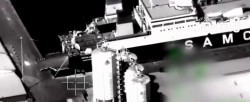New Paradigm for the Valuation of Works of Art: A Change that Turns the Art Market on its Head
- 2020-04-20 15:36:17


 Pierre Rayer: Art, Science, and Happiness: The Universal Mission of Transmission to Future Generations through Patronage at the Louvre Abu Dhabi
Pierre Rayer: Art, Science, and Happiness: The Universal Mission of Transmission to Future Generations through Patronage at the Louvre Abu Dhabi Ahly crowned Super champions after dramatic extra-time win over Modern Future FC
Ahly crowned Super champions after dramatic extra-time win over Modern Future FC Yemeni Honey..A Development Wealth Threatened By Conflict And Climate Change
Yemeni Honey..A Development Wealth Threatened By Conflict And Climate Change California wildfires: Millions warned of possible power cut
California wildfires: Millions warned of possible power cut Central African rebels launch attacks near capital
Central African rebels launch attacks near capital MSF Ends Emergency Cholera Response in Yemen's Ibb
MSF Ends Emergency Cholera Response in Yemen's Ibb Trump says he hopes Israel's Netanyahu will “get along” with Syria
Trump says he hopes Israel's Netanyahu will “get along” with Syria Saudi Press Agency: Coalition "limited" Airstrike Targets Two Weapon-Laden Ships in Mukalla Port
Saudi Press Agency: Coalition "limited" Airstrike Targets Two Weapon-Laden Ships in Mukalla Port Yemen : Arab Coalition Calls for Immediate Evacuation of Mukalla Port
Yemen : Arab Coalition Calls for Immediate Evacuation of Mukalla Port Yemen : Southern Forces Announce Killing of Senior al-Qaeda Leader in Hadramout
Yemen : Southern Forces Announce Killing of Senior al-Qaeda Leader in Hadramout
